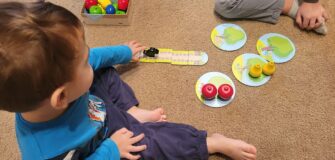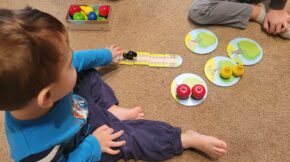How to Dress Baby for Sleep: A Complete Guide
Share
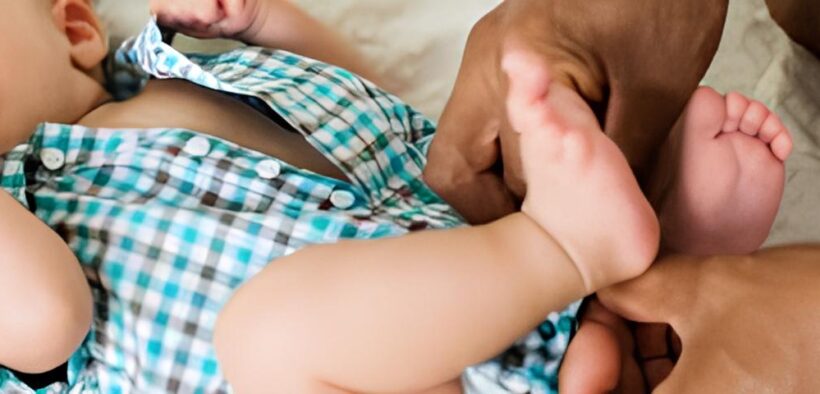
Parenting is a tough job, and it truly takes a team to raise a well-rounded individual fit to survive in this world. But, it’s often the pressure on parents that does this job among the toughest in the world.
If you are a first-time parent, use this as your reminder to BREATHE! You’ve got this; everything is, In Fact, under control. As a parent, even the smallest things can feel like a challenge equivalent to summiting a peak! ‘How to dress baby for sleep? Is baby cream safe for kids,’ Should you swaddle your baby? ‘ These are just a few of the hundreds of questions you are bombarding your friend google with.
It’s during times like this that you, as a parent, must remind yourself that you’ve done a great job so far. Babies sleep for a good part of their day and night during those initial months.
And as a parent, it’s not surprising you bring the end of worlds together to ensure the baby gets pure, uninterrupted sleep.
Figure out the Temperature
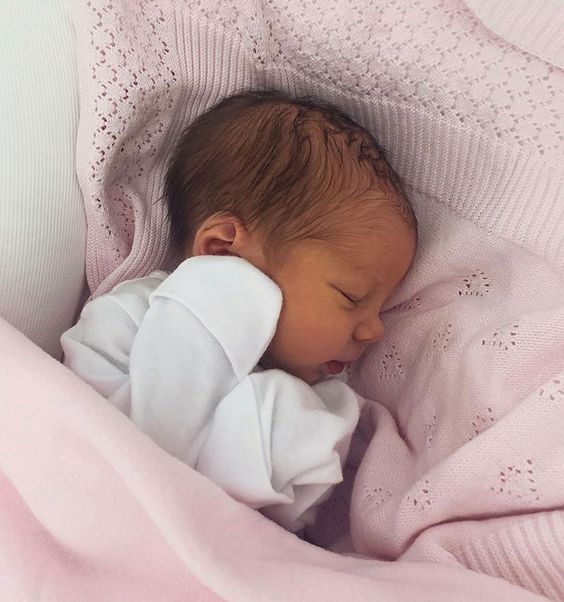
Often, it isn’t just the external disturbances that wake them; something as basic as how to dress a baby for sleep is important and matters. You have arrived at the right place because here’s everything you need to know about dressing your baby to sleep.
What About Adding Layers of Clothing?
Understand that temperature is a critical parameter to ensure your baby sleeps well. Have you ever experienced disturbed sleep when you aren’t using your own blanket or sleeping on a different bed? It’s the comfort plus the effect of temperature. Don’t you choose a blanket that is perfectly made to meet your specific temperature needs? Similarly, your baby probably also needs that perfect temperature to get lost in a deep slumber.
Expert advice, when convoluted with half-baked knowledge and hearsay from parents and adults, can result in misinformation. People often say, always have an extra blanket or layer when your baby is sleeping. Factors such as what is the temperature in your geographic location and how cold, hot, or humid it is must impact your final decision. This is why you always use your discretion and read expert advice to get the right suggestion.
If you live in a tropical region, don’t just blindly wrap your baby up in an added layer. Don’t avoid added layers if you live in too cold areas.
Creating the Perfect Sleep Ambiance
Parents’ instincts and the knowledge you have gained from reading all those parenting books will always come to help. Ideally, covering the baby well in a comfortable onesie is recommended.
This in itself may be enough if you live in tropical areas or on warm and sunny days in summer. However, if you live in comparatively cooler areas, you can add an extra layer of clothes or use thick clothes to protect the baby from the cold. Swaddling the baby is also a great alternative that works wonders for the baby.
Not only does it make the baby feel protected, but also warm enough for a good night’s sleep. The perfect replication of the womb.
Avoid Overheating at All Costs!
However, there’s an underrated tip for you – it is okay for the baby to be SLIGHTLY underdressed than to be overdressed by any measure. You must exert caution to ensure the baby feels overheated under no conditions.
In fact, overheating is fairly common because parents tend to overdress babies. Be more attuned to the baby’s needs and observe them to understand if they are feeling uncomfortable. As a parent, trust yourself to know your baby’s discomfort above everyone else.
Did you know that Sudden Infant Death Syndrome is often associated with the risk of overheating? Make sure you take special care to dress the baby in warm, comfortable clothes during the first 6 months.
The Curious Case of The Swaddle!
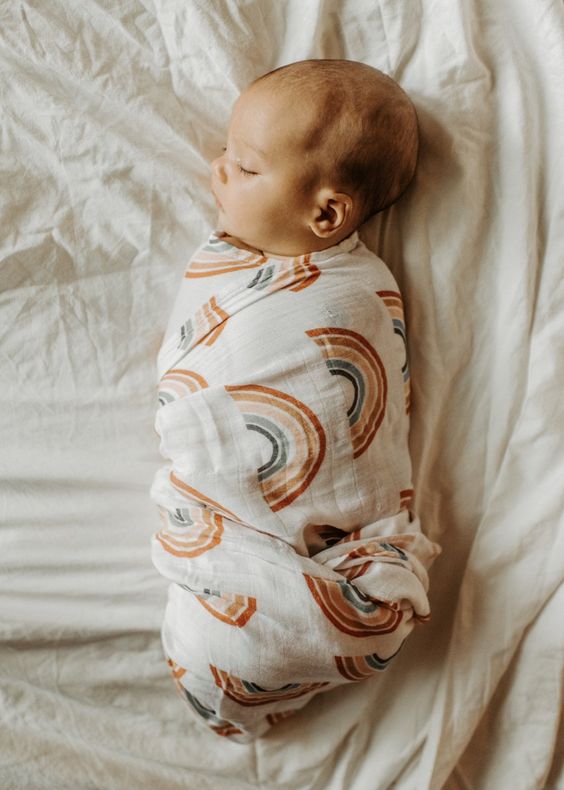
What is Swaddling?
Swaddling a baby or letting the baby free is a question that has been debated through the years. Every parent you meet might feel very strongly about their decision to swaddle. Don’t let this swaddle your way! Learn, try, and experiment. It is a well-known fact that babies truly adjust well to being swaddled.
Thus, snug fit, burrito roll-type feeling reminds them of the womb, the comfort they have known since the beginning of their life. It makes them feel safe and has a soothing effect on them. Using the right materials for swaddling is extremely important.
The Right Materials for Swaddles
Go for safe, well-trusted, proven options such as cotton swaddles or muslin swaddles for your baby.These materials are known for their breathability, comfort against the skin, and extremely good with temperature fluctuations.
Plus, cotton just feels right because of the flexibility it offers. Swaddles are stretched, snugged, washed often, and go through quite a bit in their little swaddle lifetime. Nothing beats cotton in all its goodness for rough and tough use such as this.
Ready Made Swaddles or Do-It-Yourself Swaddles?
‘But I don’t know how to swaddle, and I don’t trust store-bought swaddles.’ Well, there is always a first time! You can choose if you want to dabble with YouTube videos that teach ‘how to swaddle your newborn.’ Or you want just to save yourself the hassle and use a velcro or zipper swaddle.
The fact of the matter remains that even store-bought swaddles from good brands are designed after a lot of experimentation and tests to do the job well.
It is always better to trust a store-bought swaddle than to do a shoddy job at it, especially because it could be uncomfortable to the baby when not right; either way, you are still doing an excellent job of being a good parent and safeguarding your little one’s interest.
Tip: Discontinue swaddling your baby, especially when your baby has learned to roll over. This may differ from baby to baby; when you feel your baby is now comfortable enough and has started rolling over, wean the baby off the swaddle.
If you are from team ‘No Swaddle,’ that’s perfectly fine, too. Just use mittens, socks, or clothes covering the feet to ensure your baby remains cozy all night.
How to Dress Baby for Sleep?
Dressing a baby for sleep is, in fact, easier than you would think. Don’t overthink it; follow these simple steps to make sure your baby stays comfortable across all conditions.
1. Dressing a Baby During Summer
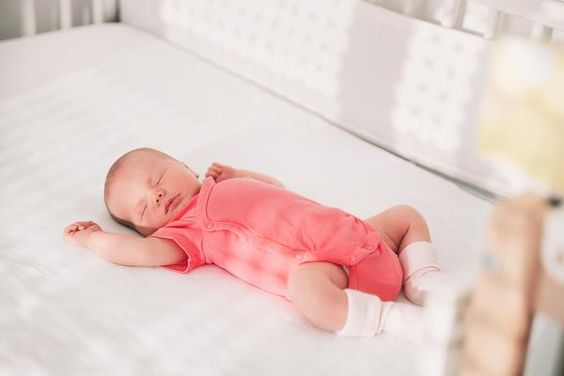
Summer nights can be unpredictable. On some days, it’s warm, cozy, beachy goodness summer; on other days, it is an unbearable, hot, sweltering summer. How you dress your baby on both those days will be vastly different.
For example, on good, cozy days, dressing your baby in a simple two-piece pajama set or a simple onesie made of light cotton is perfectly okay. Do not use a thick swaddle during summer. Muslin swaddles or light swaddles can work well in such cases.
If you have observed that the days are getting too hot and you are breaking into a sweat, chances are your baby is too. But they cannot express it as well as you do when it’s too hot; just a simple T-shirt or top with just a diaper works. You can also choose sleeveless thin cotton sets. Leave the munchkin’s hands, legs, and neck open and airy enough for comfort.
2. Warmth for Chilly Nights!
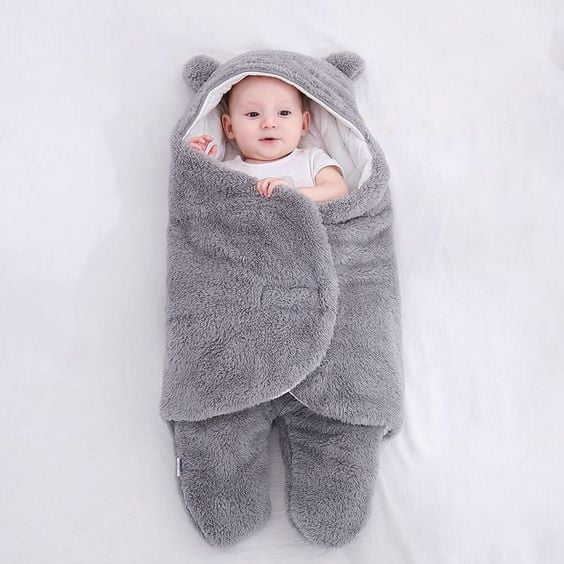
Winter is definitely going to be a tricky time for parents. Ensuring your baby is warm enough through the night is very important. Try fleece material for your baby’s nightwear. You can choose a fleece pajama that has a snug fit.
These days, you also get heavy microfleece swaddles that can be an add-on to babies’ pajamas. Nothing is as comfortable as the good old cotton pajamas.
If you are someone who trusts cotton, choose simple pajamas for your baby and top this up with a fleece swaddle. Your baby will get the best sleep, all bundled up!
3. Should You Cover a Baby’s Head?
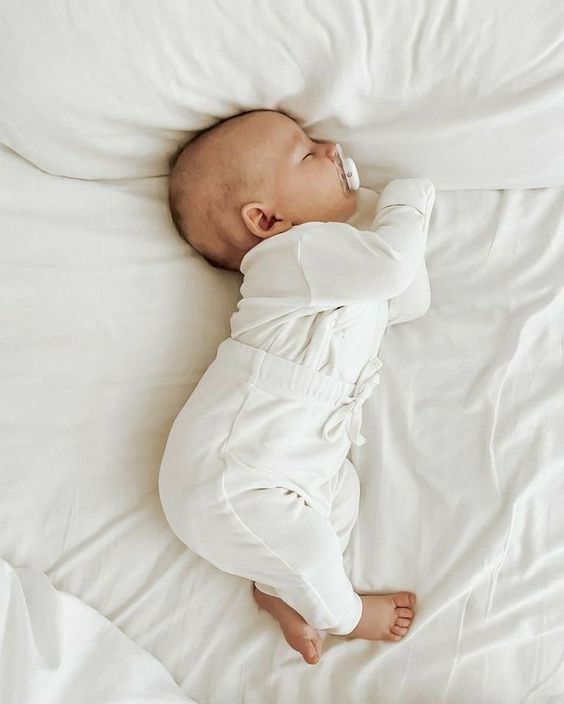
No, this isn’t about fancy baby headbands! It isn’t recommended to cover your baby’s head during sleep. Usually, these headcovers have strands to tie knots or elastic. Both of these things could turn uncomfortable or risky before you know it.
Especially restless babies who move their arms and legs a lot. It is possible that the head cover could slide over the baby’s face, and the strands could choke or strangle the baby. These nightmarish incidents could happen faster than you would imagine.
This is why it is always recommended to leave the head free during sleeping. It is also said that the baby eventually self-regulates temperature and can release heat from the head. In this case, it could result in overheating, thus causing discomfort or something more serious.
4. Snuggly Choices for Your Little One
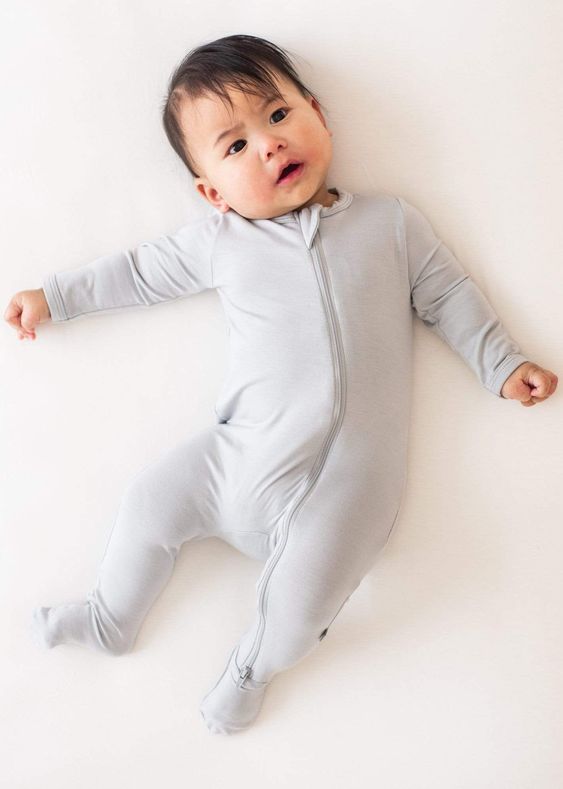
When in doubt, always go for something warm and snuggly. There is a very good reason adults love snuggly clothes during sleep. Babies are no different.
A good snuggle fit fosters comfort above everything else. Babies sleep better in this warm and snuggly feel. You also get good pajamas that are designed especially as nightwear.
It, therefore, comes as no surprise that cotton is among the top leading materials that come in a snug fit. You also get snug-fit products made of other materials, such as natural fiber.
These materials are safe for the baby. Once again, be wary of using any trending materials or products, as they might not have the same credibility as these age-old hacks.
When Should You Look for Signs?
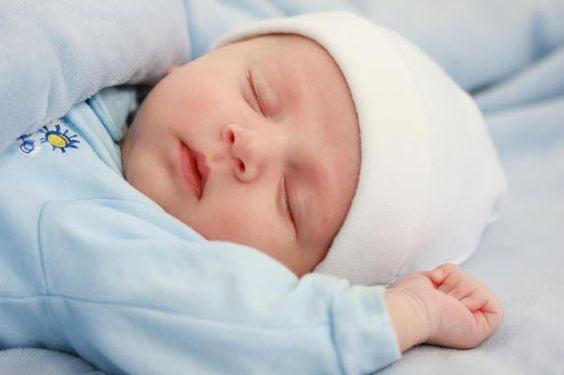
You don’t need to be told; it’s something you are probably doing instinctually. Parents have a gut instinct within them that only gets stronger with time the more they observe their babies. Parenthood does that! If you have spent too many sleepless nights and worried days nitpicking every small baby gesture, then you’ve probably already got this.
During Trying New Material of Clothing
If you are trying on a new pair of clothes or materials, look for signs. For instance, a well-fed, healthy baby crying uncharacteristically could just mean discomfort because of clothes. It could mean they are either feeling too hot or too cold for their own comfort.
If you notice a baby sweating around the neck and being cranky all day during summer, it’s probably the heart. This is why it is important to look for signs.
During Summer or Hot Temperatures
Also, look out for more physical signs of overheating in your baby. Perspiration is, of course, one of the most telltale signs of heat. Baby’s hair is wet with sweat, faster or abnormal breathing, and redness of cheeks and forehead indicates overheating. If you feel that the baby’s head, stomach, or chest area is sweaty or hot, it could be that they are feeling comfortable.
This can result in serious consequences that may also turn fatal if overlooked. Immediately get them into a cooler, well-ventilated area to ensure they cool down. Remove any extra clothes on them that could be causing it.
On the other side of the spectrum, ensure the child is not too cold during winter. Signs of this include the hands or feet of the baby turning bluish. Or their extremities, like hands and feet, are too cold to touch and feel.
In this case, quickly put on some warm mittens, add on a swaddle or warm clothes, and the baby will be warm and pink soon enough.
Stay Away from Blankets
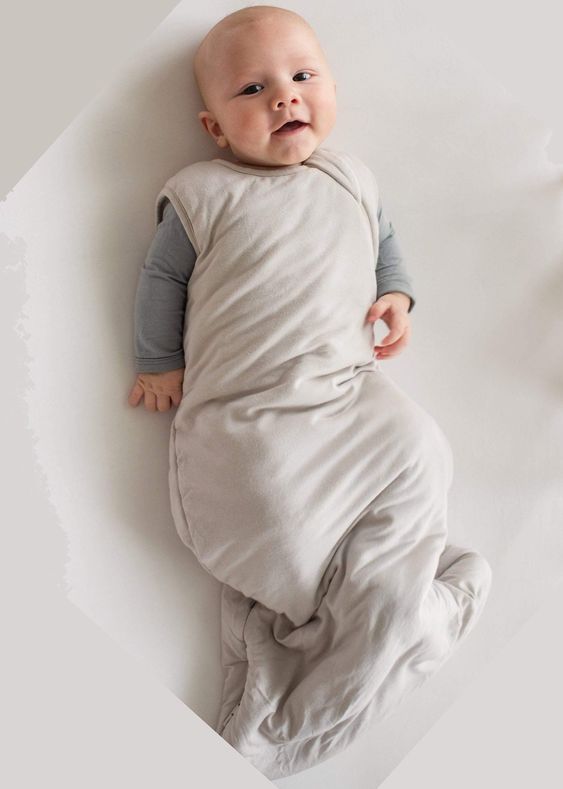
Keeping blankets away from kids during sleep may seem counterintuitive, but it is the golden rule. Loose clothing items, blankets, soft toys, pillows, cushions, and extra cloth around the baby are hazardous.
Baby could get choked and restricted breathing because of these items coming in the way. You are allowed to have a pacifier in the crib, but nothing other than that is advisable.
As the baby gets bigger, you will need to learn, observe, and try out ways to accommodate the needs of the baby better. For instance, swaddles are great up until 6 months, but not after. Keep updating yourself on how to dress babies for sleep as they grow older.
Conclusion
Parenthood decisions and dilemmas are a never-ending, exhausting task. But, it holds importance because of the safety and security of a child.
When the child sleeps well, not only does it have a great developmental impact on the baby, but parents catch a break.
Therefore, ensuring your baby gets a good night’s sleep depends heavily on how to dress the baby for sleep, among other factors.
And while there are hundreds of books, blogs, and research on the ‘right way’ to parent, always build your instinct.
Trust the bond between you and your little one and learn ways of reading their body language and responding to it.
In general, always keep those snuggly, cute cotton pajamas handy for babies!
Frequently Asked Questions
What is the Ideal Sleepwear for Babies?
Babies are humans! What feels good, safe, and most comfortable to adults works for children, too. Try always to have comfortable cotton wear that snuggles well. Put in an additional layer like a sweater or swaddle only if required.
How Do I Know My Baby is Too Hot While Sleeping?
Look out for signs of perspiration around the neck or hot, sweaty hair on the head. You can also feel the baby’s stomach and chest area to see if it’s too hot. Other signs of overheating include increased breathing and redness of the face, especially the cheeks.








